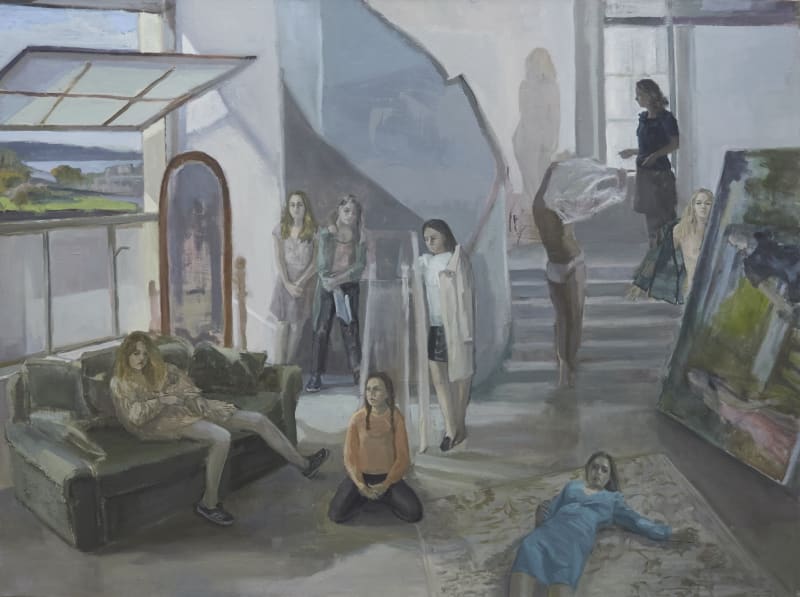In the small rectangular space of Monya Rowe Gallery, up on the 10th floor of a midtown building, Vera Iliatova’s solo show – titled “Nothing is True and Everything is Possible” – takes her viewer on a surreal, nostalgic walk reminiscent of 1980s school day walks in St Petersburg, Russia. Slightly more than half a dozen moderately sized and small oil-and-acrylic paintings completed within the past year hang quitely on white walls. Iliatova reflects on her own past with deep longing for times both missed and long since passed, bringing strange, forlorn, cross-continental energy into the depicted spaces.
One striking factor in all of these paintings is her master skill of composition. Specifically, the complexity of composition in Nothing is True and Everything is Possible (2020) echoes Nicolas Poussin’s Saints Peter and John Healing the Lame Man (1655). The poses in both paintings are derived from Roman antiquity, as if statues came to life and were captured in a still. The stillness in Iliatova and Poussin’s work is eerily similar but the subjects could not be more different. Iliatova handles multi- figure compositions with Poussin’s grace and, in this particular work, also ties in the architecture of stairs with organic rhythm. While the staged nature of her painting – in a contemporary context – may at first glance appear uncomfortable, the classical construction feels unmistakably familiar. In this case, teenage girls with wandering glances appear hanging out together, but remain emotionally removed from each other in an industrial building amid an anachronistic landscape outside the window. Iliatova’s painting thrives on that familiarity: young women, most likely school-age (right about when Iliatova herself moved to the United States from USSR), are positioned in poses suggesting conversation and interaction. Upon closer observation, however, every single figure appears implicitly lonely, gazing down or past the others. Where Poussin’s depictions of such gazes and poses play up the drama, in Iliatova’s work they mirror a state of being, one representing both nostalgia for a time since passed and a lost opportunity for connection. Upon first glance, one of her other paintings in the show, The Ties That Bind (2019), has a similar sentiment to Poussin’s The Finding of Moses (1638). Rhythm and composition are striking in the same way, but the meaning and the somewhat bizarre arrangement of young women in a park in Iliatova’s work sets them apart from the 17th century painter by bringing them into the contemporary.

